Dear Zazie, Here is today’s Lovers’ Chronicle from Mac Tag dedicated to his muse. Do you long for the one you love? How many ways? Rhett
The Lovers’ Chronicle
Dear Muse,
© copyright 2020 mac tag/cowboy coleridge all rights reserved
© copyright 2019 mac tag/cowboy coleridge all rights reserved
words come haltin’
forth, tryin’ to stay,
and feel still seems
a long way off
thus with will to speak,
and helpless in throes,
holdin’ my hesitant pen,
wrestlin’ with doubt
“Look in thy heart and write.”
in truth, and fain
in verse to show
voices of the night
have i caught
come sleep,
the certainty,
the balm of woe,
the release,
between what has
and has not been done
think not that i by verse seek
anything more than this…
to find my way back to you
© copyright 2018 mac tag/cowboy coleridge all rights reserved
how many ways
oh, i s’pose a lot…
protective, in tune,
and sensitive, a gift
the ability to feel everything
a brave feat, to have a heart
that can open so fully
and give and receive
a breath of life, a reminder
of release, prayer, and connection
© copyright 2017 mac tag/cowboy Coleridge all rights reserved
How Many Ways
Were I as witty as Wilde
No doubt a better poet
Would I be and these words
I write would wind their way
Better around your heart
Some men can be happy
With any woman as long
As they do not love them
With you I found it easy
To love you and be happy
How many ways
Can it be said
Still missin’ you
Some men think women were made
To be loved and not understood
Learnin’ to understand you
Was the best part of lovin’ you
How many ways
Can it be said
Still needin’ you
Some say we ought to misbehave
Or rather look like we might
Misbehavin’ or pretendin’
Was never more fun than with you
How many ways
Can it be said
Still wantin’ you
Some think when it comes to lovin’,
Three is company and two none
When you and I were together
You were all I ever needed
How many ways
Can it be said
Still lovin’ you
Some say and it has been written
One should always be in love
How many ways can it be said
Would it were that I still was
© copyright 2012 mac tag/Cowboy Coleridge all rights reserved
The Song of the Day is “How Many Ways” by Murray Head.
| William-Adolphe Bouguereau | |
|---|---|

Portrait of the Artist (1879)
|
|
Today is the birthday of William-Adolphe Bouguereau (La Rochelle, France; November 30, 1825 – August 19, 1905 La Rochelle); academic painter and traditionalist. In his realistic genre paintings he used mythological themes, making modern interpretations of classical subjects, with an emphasis on the female human body. As the quintessential salon painter of his generation, he was reviled by the Impressionist avant-garde. By the early twentieth century, Bouguereau and his art fell out of favor with the public, due in part to changing tastes. In the 1980s, a revival of interest in figure painting led to a rediscovery of Bouguereau and his work. Throughout the course of his life, Bouguereau executed 822 known finished paintings, although the whereabouts of many are still unknown.
In 1856, he married Marie-Nelly Monchablon. In 1877, she died. Bouguereau was married for the second time in 1896, to fellow artist Elizabeth Jane Gardner, one of his pupils.
Gallery
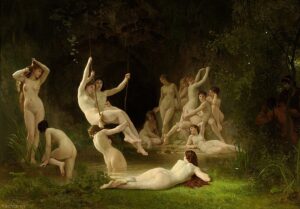
La Nymphée


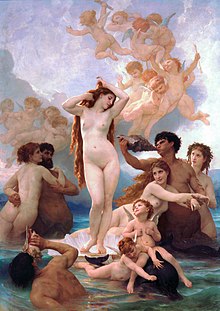
-

The Bather – Baigneuse (1879)
-
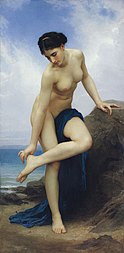
After the Bath (1875)
-

Baigneuse (1825-1905)
-

Baigneuse (1825-1905)
-
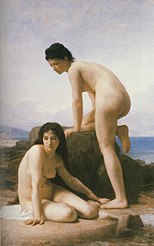
Les Deux Baigneuses (1884)
-

Innocence
-
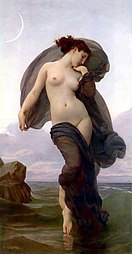
Soir, Evening or Evening Mood
-

L’Aurore or Dawn
-

Psyche
-
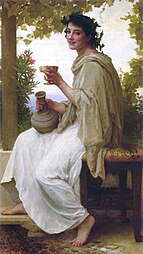
Bacchante (1894)

-

Fraternal Love (1851)
-

The Day of the Dead (1859)
-

Charity (1859)
-
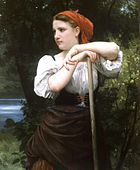
The Haymaker (1869)
-

Italian Girl Drawing Water (1871)
-

Les murmures de l’Amour (1889)
-

Charity (1878)
-

A Young Girl Defending Herself Against Eros (1880)
-

Song of the Angels (1881)
-

Biblis (1884)
-

Seated Nude (1884)
-
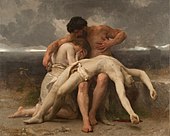
The First Mourning (1888)
-

The Invasion (1892)
-
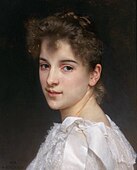
Gabrielle Cot, daughter of Pierre Auguste Cot – 1890
-

A Little Coaxing (1890)
-
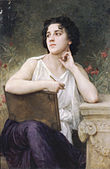
Inspiration (1898)
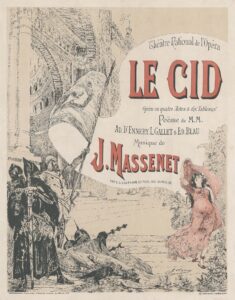 Today is the premiere date of Le Cid, an opera in four acts and ten tableaux by Jules Massenet to a French libretto by Louis Gallet, Édouard Blau and Adolphe d’Ennery. It is based on the play of the same name by Pierre Corneille.
Today is the premiere date of Le Cid, an opera in four acts and ten tableaux by Jules Massenet to a French libretto by Louis Gallet, Édouard Blau and Adolphe d’Ennery. It is based on the play of the same name by Pierre Corneille.
It was first performed by a star-studded cast at the Paris Opéra on 30 November 1885 in the presence of President Grévy, with Jean de Reszke as Rodrigue. The staging was directed by Pedro Gailhard, with costumes designed by Comte Lepic, and sets by Eugène Carpezat (act 1), Enrico Robecchi and his student Amable (act 2), Auguste Alfred Rubé, Philippe Chaperon and their students Marcel Jambon (act 3), and Jean-Baptiste Lavastre (act 4). The opera had been seen 150 times by 1919 but faded from the repertory and was not performed again in Paris until the 2015 revival at the Palais Garnier. While Le Cid is not in the standard operatic repertory, the ballet suite is a popular concert and recording piece which includes dances from different regions of Spain. It was specially created by Massenet for the prima ballerina Rosita Mauri. An opera on the subject had been composed by Sacchini, Il Cid, for London in 1783, and from 1890 to 1892 Debussy worked on, but did not complete, an opera Rodrigue et Chimène also based on Corneille.
And on this day in 1886 – The Folies Bergère stages its first revue.

2013, after renovation of facade (originally created in 1926)
|
|
The Folies Bergère is a cabaret music hall, located in Paris, France. Established in 1869, the house was at the height of its fame and popularity from the 1890s’ Belle Époque through the Golden Twenties. The institution is still in business, and is still a strong symbol of French and Parisian life.

Located at 32 rue Richer in the 9th Arrondissement, the Folies Bergère was built as an opera house by the architect Plumeret. It opened on 2 May 1869 as the Folies Trévise, with light entertainment including operettas, opéra comique (comic opera), popular songs, and gymnastics. It became the Folies Bergère on 13 September 1872, named after a nearby street, the rue Bergère (“bergère” means “shepherdess”). The American impresario Florenz Ziegfeld, Jr., named his light-hearted, extravagant Broadway revues the Ziegfeld Follies (1907-1931), after the venue.
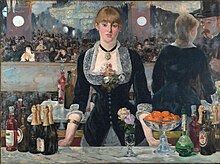
In 1882, Édouard Manet painted his well-known painting A Bar at the Folies-Bergère which depicts a bar-girl, one of the demimondaines, standing before a mirror.
In 1886, Édouard Marchand conceived a new genre of entertainment for the Folies Bergère: the music-hall revue. Women would be the heart of Marchand’s concept for the Folies.

mac tag

No Comments on "The Lovers’ Chronicle 30 November – ways – art by William-Adolphe Bouguereau – premiere of Le Cid by Jules Massenet – Folies Bergère"